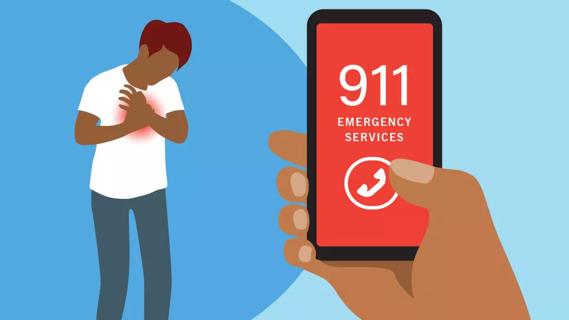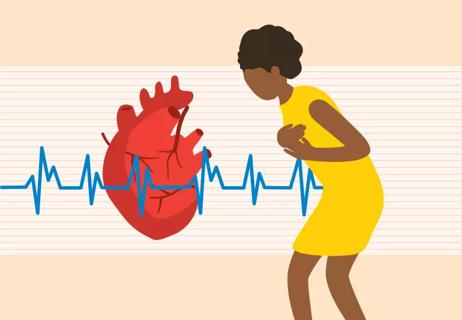Absolutely! In fact, in many ways, exercise is key to recovery

A blood-pumping workout puts extra demands on your heart. You can feel it, too, with every thumping heartbeat as you push through a weightlifting set, swim another lap or gobble up one more mile on a run.
Advertisement
Cleveland Clinic is a non-profit academic medical center. Advertising on our site helps support our mission. We do not endorse non-Cleveland Clinic products or services. Policy
So, if you’ve had a life-threatening heart attack and experienced the pain and worry that comes with it … well, you might be a little hesitant to test your ticker again.
But know this: You CAN exercise again. In fact, it’s the best thing for your heart.
But there’s a deliberate process to getting back in action that should be followed. Let’s break it down with sports cardiologist Tamanna Singh, MD, and Cleveland Clinic Director of Cardiac Rehabilitation Erik Van Iterson, PhD.
In the early days right after a heart attack, moving your body and activating muscles — particularly in your legs — is good for you. Try to get up and leisurely walk as much as possible even before you leave the hospital, advises Dr. Van Iterson.
Consider every footstep part of your cardiac rehabilitation journey. “We want to stimulate recovery in a graceful, smooth and uneventful manner,” adds Dr. Singh.
Once at home, it’s important to take a sensible approach to being active. Gradually turn short strolls into longer walks as you recover and feel stronger. You’ll want to ease back into exercise with a slow-and-steady approach.
Focus on rebuilding your endurance and stamina, not on how strong you are and how much you can lift. The goal is to use exercise to heal — not to scale Mount Kilimanjaro.
Advertisement
“The time you invest doing things slower with less intensity right off the bat is going to pay dividends when you’re six months or a year out from your heart attack,” says Dr. Singh. “Give yourself a little bit of grace.”
While it’s possible to design your own training program after a heart attack, consider this an ideal time to lean on the experts for help. Enrolling in a cardiac rehabilitation program can help you rebuild aerobic capacity and strength.
Advantages of cardiac rehab include:
It should be noted that most outpatient cardiac rehab programs are covered by health insurance. A standard cardiac rehab program typically involves three sessions a week for a total of 36 sessions performed over three months.
But it’s always good to contact your insurance provider before you get started in a program to confirm your coverage and the number of sessions allowed. Rehab session limits can vary depending on your plan.
Physically recovering from a heart attack requires patience — an attribute that’s often in short supply. It’s natural to want to push ahead, after all, admits Dr. Singh.
But when you push too hard, your body will let you know. Warning signs include:
Advertisement
“It’s important to listen to your body and don’t minimize what you’re feeling,” stresses Dr. Singh. “The more attuned you are to what’s going on the better we’ll be able to develop a plan of action moving ahead.”
A heart attack doesn’t have to mean the end of high-intensity exercise. In theory, any exercise can be fair game after a heart attack, says Dr. Van Iterson. Just know that it’ll take time to get there.
What you can do — and how soon you can do it — depends on a variety of factors, including:
“There are so many different things that go into the timing of when you can return to exercising and the intensity of what you can do,” notes Dr. Singh. “But the more you invest in following a gradual process, the more successful you will probably be in getting to the level you want.”
There are no guarantees, of course. Some people find that they can’t return to the same level of training following a heart attack and need to adjust their expectations and goals. “Every case is different,” she adds.
Advertisement
Work with your healthcare provider and cardiac rehabilitation team to figure out a reasonable plan and pace of progression.
While staying active is important for your health following a heart attack, high-intensity workouts aren’t a requirement or necessarily more beneficial than moderate-intensity workouts. Cardiac rehab doesn’t need to mimic training for an IRONMAN® competition.
“You don’t have to go for maximal exercise for it to be effective,” emphasizes Dr. Van Iterson. “Focus on setting realistic goals that are rewarding, build upon one another and help you get started for the first time or get back to exercising in a safe and enjoyable way.”
Don’t underestimate the mental aspect of restarting an exercise program either. Dr. Singh says she encourages people who go through a heart attack or other cardiac event to talk to a psychologist, psychiatrist, therapist or counselor.
“Something just happened to a pivotal life organ in your body,” she continues. “There is going to be stress and concern. Talking to someone is a way to build some confidence and reassurance to move forward while feeling safe.”
Exercise isn’t just possible after a heart attack. It’s necessary to make you and your heart stronger for the years of life ahead.
Advertisement
“Exercise is huge in the recovery process from a heart attack and key to preventing future heart attacks and further damage,” encourages Dr. Singh. “I can’t emphasize enough how important it is to get moving in some way.”
Learn more about our editorial process.
Advertisement

Calling 911 or emergency services should always be your first step

Mild heart attacks may cause less damage, but they can still lead to serious complications and require medical attention

Congenital heart disease, genetic conditions and unhealthy lifestyle habits can put teens at higher risk for heart attack

Recognizing subtle symptoms, like cold sweats, stomach discomfort and nausea, could be the key to survival

There’s no way to stop it once a heart attack is happening, but the most important thing you can do is to call for help

To help determine what you’re experiencing, focus on how the pain feels, the location of the pain, when it started and how long it lasts

Symptoms may be mild, but don’t be fooled — any heart attack is serious

Sedentary lifestyles are driving up heart attack numbers in the under-40 crowd

The best parenting style balances enforcing rules and showing plenty of love

Tips include cutting back on sugar, focusing on exercise and managing stress

It can be harder to let go when you’ve invested time, energy and emotions — but it might be the healthier choice long term